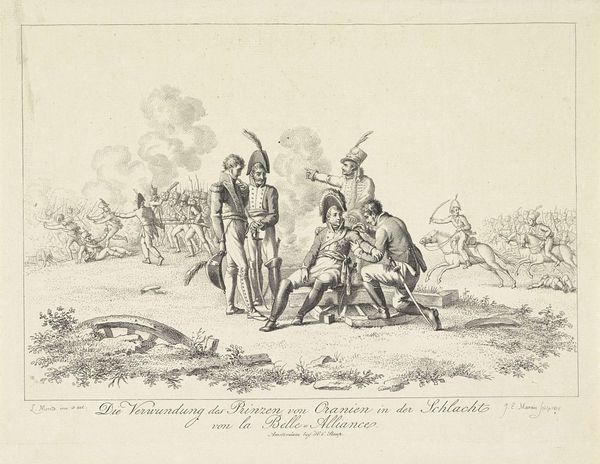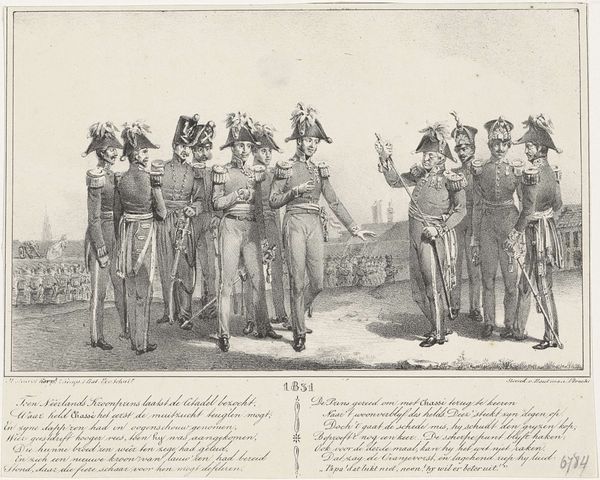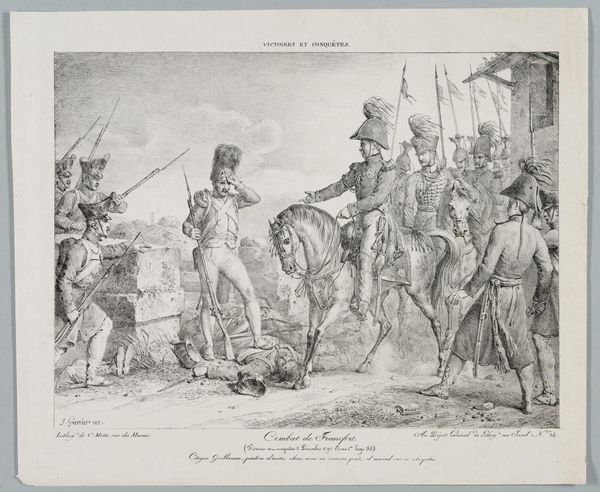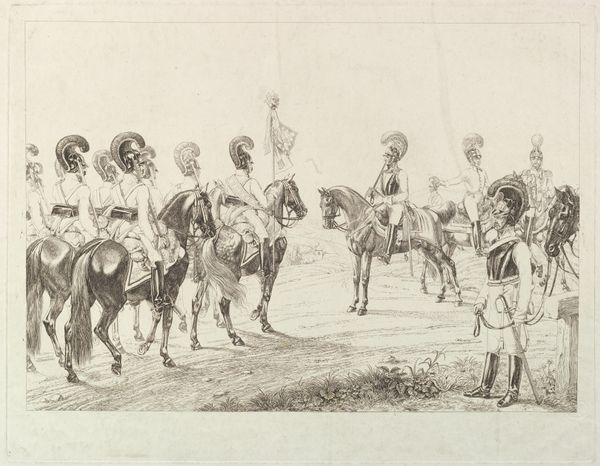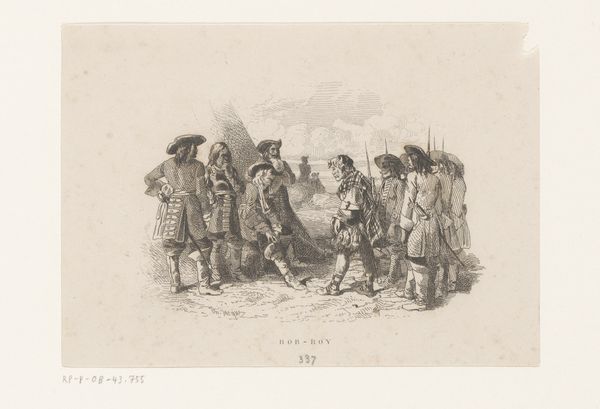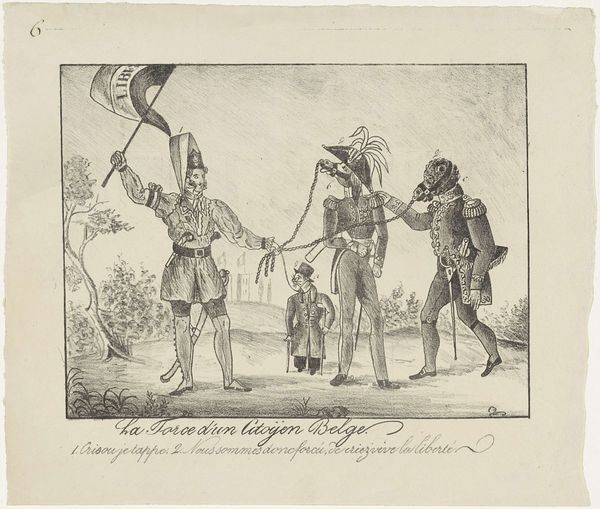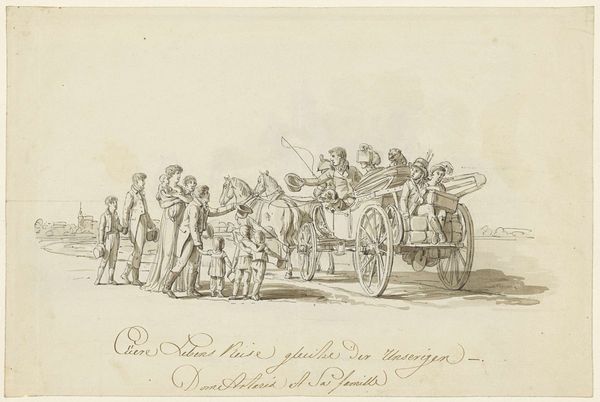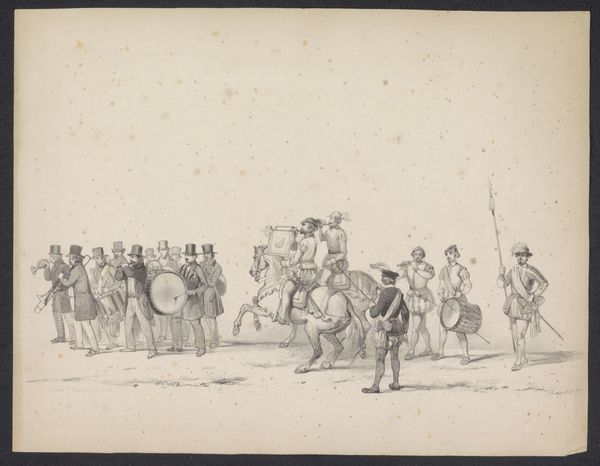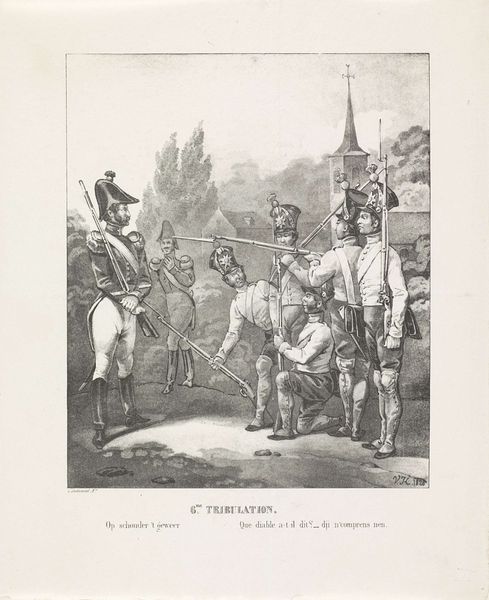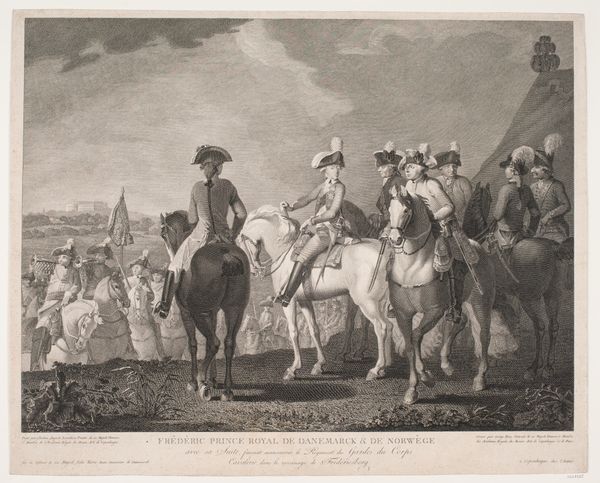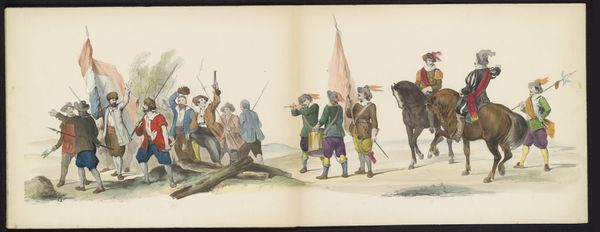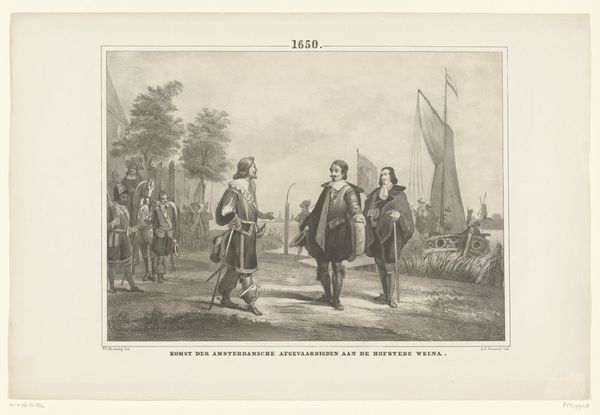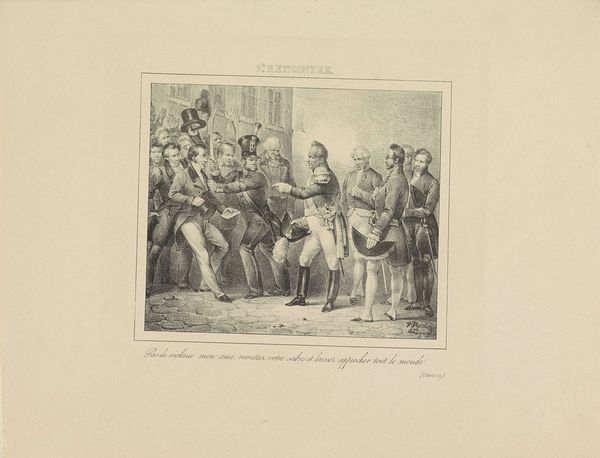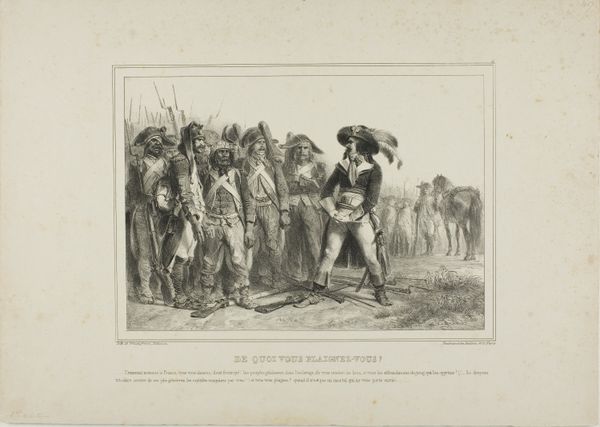
print, engraving
#
portrait
#
neoclacissism
# print
#
historical photography
#
19th century
#
genre-painting
#
history-painting
#
engraving
Dimensions: height 380 mm, width 570 mm
Copyright: Rijks Museum: Open Domain
Curator: This print, "Franse en Engelse figuren," or "French and English Figures," by Charles Francois Gabriel Levachez, dates from 1802 to 1803 and gives us a glimpse into early 19th-century fashion. Editor: My initial impression? The whole composition breathes social performance, with the fashions declaring class status! Every gesture seems staged. Curator: It's Neoclassical in style, relying on line and form, printed with precise engraving. Note the subtle differences in how French and English society members were being depicted—fabric qualities and the ways they’re rendered are key to decoding class and nation. Editor: Absolutely, these clothes practically scream national identity! Those tall hats, the way they carry umbrellas—these weren’t just outfits, they were declarations. This piece encapsulates its era by mirroring its culture; it shows symbols of national pride while echoing themes around empire and industrial advances in fashion and cloth. Curator: And how do you read the imagery of the family grouping to the right? Does it tell a story through its subtle symbolism? Is this a visual commentary of how societal norms were at this moment of time? Editor: Indeed! Their groupings convey societal values; The positioning of each child to the matron creates this idea of dependency while communicating innocence. Those parasols—they protect physical, perhaps even moral well-being. The darker colors might speak to a kind of established authority, tradition perhaps? Curator: Examining this as a materialist work we can see that these detailed costumes were made possible by advancements in textile production during the industrial revolution. How has art always engaged with mass consumption of items? Editor: In short, the way symbols solidify then transition is ever flowing. These ensembles weren’t random, they communicated societal hierarchies. Each thread of detail reflects its era; these engravings serve now as mirrors displaying aspirations. Curator: Well put. It provides insight on the impact material culture and textile had on social standing and artistic representation during this fascinating era. Editor: And in turn allows us a snapshot to the ongoing conversation that clothing and the meanings they signify is.
Comments
No comments
Be the first to comment and join the conversation on the ultimate creative platform.
